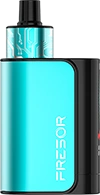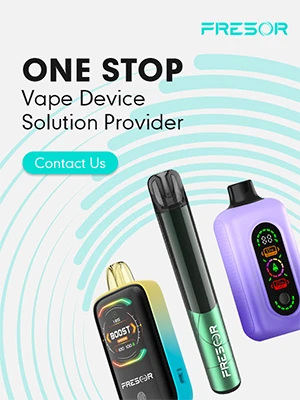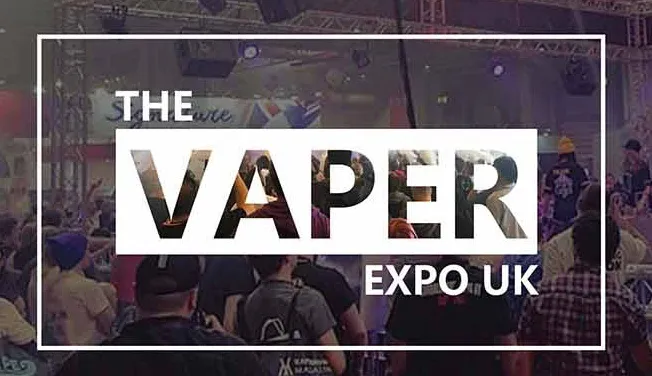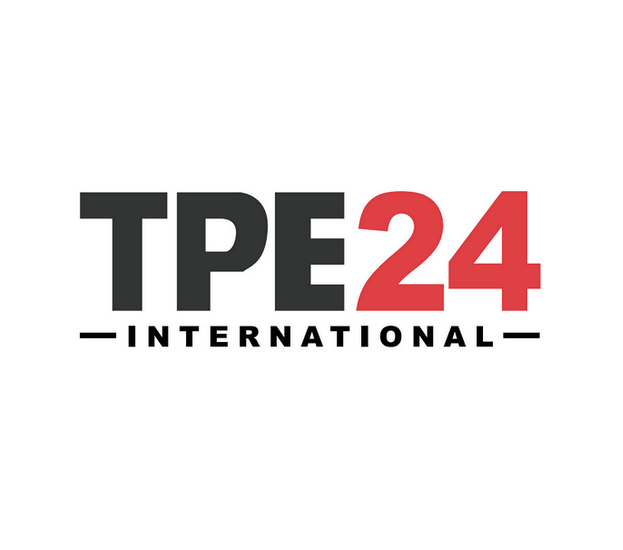Vaping Can Make You Dizzy? What You Need to Know

24 May 2024
Vaping has become a popular alternative to traditional smoking, with many people turning to e-cigarettes as a way to quit smoking or reduce their nicotine intake. However, like any other activity, vaping can have potential side effects. So today we are asking question can vaping make you dizzy?
While dizziness is not usually dangerous, it can be uncomfortable and even disorienting. In this post, we will explore the reasons why vaping can make you feel dizzy after vaping, the common symptoms to look out for, and tips to prevent dizziness while vaping.

Understanding Dizziness from Vaping
Vaping has become a popular alternative to traditional smoking cigarettes, but it can have potential side effects, including dizziness.
In this section, we will explore the reasons why vaping can cause dizziness, the factors that may contribute to dizziness while vaping, and how too much nicotine and other substances in e-liquids can affect dizziness.

Factors that may contribute to dizziness while vaping
Nicotine levels: Nicotine is a stimulant that can cause a range of side effects, including dizziness, headaches, nausea, or shortness of breath.
Most e-liquids contain different nicotine levels, so intense vaping can lead to excessive nicotine intake and dizziness.
Dehydration: Some of the e-liquid ingredients, such as vegetable glycerin and propylene glycol, absorb and retain water in your body during vaping, leading to dehydration. This can cause dizziness and other symptoms such as headaches and dry mouth.
Allergic reaction: Some vapers can face hypersensitivity or allergic reactions to certain ingredients in vape juice. Symptoms of these reactions generally include dizziness, headaches, rashes, nausea, or difficulty breathing.
It is best to consult a doctor in these situations because identifying which ingredient caused the reaction is the most reliable way to prevent this problem from recurring.
Inhaling too deeply: Vapers usually take too big puffs while vaping. However, most of them are unaware that the inhalation technique is very important. With deep breaths, nicotine moves through the vaper’s body at high speed, which can lead to sudden dizziness or sensitivity.
Vape Settings: If you set your device to have a higher temperature and wattage, it will produce more vapor. Consequently, more nicotine will enter your lungs.
Therefore, it is better to choose lower settings initially and gradually increase them over time.
How nicotine and other substances in e-liquids can affect dizziness
The concentration of nicotine in e-liquids can significantly affect dizziness. Nicotine, a primary ingredient in most e-liquids, is a stimulant that can cause a range of side effects, including dizziness, headaches, and nausea.
The higher the concentration of nicotine in an e-liquid, the more likely it is to cause dizziness.
This is because higher concentrations of nicotine can lead to a more intense and rapid absorption of the substance into the bloodstream, which can cause a greater impact on the nervous system and lead to feelings of dizziness.
In addition to the concentration of nicotine, the type of nicotine used in e-liquids can also affect dizziness.
For example, nicotine salts is more likely to cause dizziness than freebase nicotine because it is more potent and absorbs into the body more rapidly.
This means that even at lower concentrations, salt-based nicotine can still cause dizziness in some people.Another factor that can contribute to dizziness when vaping is the inhalation technique.
Taking deeper or longer puffs can lead to a greater absorption of nicotine, which can increase the likelihood of dizziness.
Additionally, vaping too frequently or for extended periods can also lead to dizziness due to the accumulation of nicotine in the body.Finally, it is important to note that other substances in e-liquids can also contribute to dizziness.
For example, some flavorings and additives used in e-liquids can cause irritation or allergic reactions, which can lead to symptoms such as dizziness, headaches, and nausea.
Therefore, it is important to choose high-quality e-liquids with ingredients that are known to be safe and to avoid any that may cause adverse reactions.
In summary, the concentration of nicotine, the type of nicotine, the inhalation technique, and the quality of e-liquids can all affect dizziness when vaping.
By being mindful of these factors and taking steps to minimize the risk and sudden feelings of dizziness, even experienced vapers alike can enjoy a safer and more enjoyable vaping experience.
Common Symptoms of Dizziness from Vaping
Dizziness is a commonly reported symptom in 15-20% of vape users. It is one of the most common side effects of vaping and can be caused by several factors, including the concentration of nicotine in e-liquids, dehydration, and allergic reactions to certain ingredients in e-liquids.
Different types of dizziness:
Lightheadedness: A common sensation experienced by vapers, characterized by feeling faint or dizzy without a spinning sensation.
Vertigo: A less common but more intense form of dizziness that can make you feel like you or your surroundings are spinning or moving.
Unsteadiness: Feeling off-balance or unsteady, which can be disorienting and may lead to difficulty in coordination.
Other symptoms that may accompany dizziness while vaping:
Nausea: A feeling of queasiness or an urge to vomit that can accompany dizziness, making the overall experience uncomfortable.
Headaches: Vapers may experience headaches along with dizziness, which can range from mild discomfort to more severe pain.
Sweating: Experiencing excessive sweating or clamminess along with dizziness can be a sign of the body's response to the vaping-induced dizziness.
Palpitations: Some vapers may notice an increase in heart rate or irregular heartbeats along with dizziness, which can be concerning and may warrant medical attention.
Shortness of breath: Feeling breathless or having difficulty to breath can be a symptom that accompanies dizziness while vaping, indicating a potential impact on the respiratory system.
These symptoms can vary in intensity and duration, and it is essential to pay attention to them, especially if they persist or worsen over time.
If experiencing severe or persistent symptoms, it is advisable to seek doctor advice to address any underlying issues related to vaping-induced dizziness.
Tips to Prevent Dizziness While Vaping
Proper hydration and nutrition: Dehydration is one of the leading causes of dizziness while vaping. It is essential to drink plenty of water and maintain a balanced diet to keep your body hydrated and prevent dizziness.
Adjust vaping habits and techniques: Taking deep breaths and frequent inhaling can lead to more nicotine reaching the brain, causing dizziness. Therefore, taking breaks and allowing your body to recover is advisable. Additionally, adjusting nicotine level, knowing the type of nicotine, and checking the settings of your vape device can help prevent dizziness.
Choosing the right nicotine strength and e-liquid: The concentration of nicotine in e-liquids can significantly affect dizziness. Choosing e-liquids with lower nicotine level or nicotine-free options can help prevent dizziness. Additionally, being aware of the type of nicotine and adjusting the nicotine strength can help reduce the risk of dizziness.
Seeking medical advice if dizziness persists: If dizziness persists despite taking precautions, it is advisable to seek medical advice. Dizziness can be a sign of an underlying health condition, and it is essential to rule out any potential health risks.
In addition to the tips mentioned earlier, there are several other ways to prevent dizziness while vaping. Here are some additional tips:
Take breaks: Taking breaks between vaping sessions can help prevent dizziness by allowing your body to rest and recover.
Avoid vaping on an empty stomach: Vaping on an empty stomach can increase the risk of dizziness, so it is important to eat regular meals and snacks.
Use a lower nicotine strength e-liquid: If you are prone to dizziness while vaping, using a lower nicotine strength e-liquid may help reduce the risk.
Avoid vaping in poorly ventilated areas: Vaping in poorly ventilated areas can increase the risk of dizziness, so it is important to vape in a well-ventilated area.
Check the quality of your e-liquid: Using low-quality e-liquids can increase the risk of dizziness, so it is important to choose a high-quality e-liquid from a reputable manufacturer.
When to Seek Medical Help
Dizziness can be a symptom of various medical conditions, some of which may be serious. It is essential to pay attention to the signs that dizziness may be a serious issue, including:
Severe or persistent dizziness: Dizziness that lasts for a long time or is severe may be a sign of an underlying medical condition.
Accompanied by other symptoms: Dizziness that is accompanied by other symptoms, such as headaches, nausea, vomiting, chest pain, or difficulty breathing, may indicate a more severe medical condition.
Caused by a head injury: Dizziness caused by a head injury may be a sign of a concussion or other traumatic brain injury.
Associated with a known medical condition: Dizziness that is associated with a known medical condition, such as low blood pressure, heart disease, or diabetes, may be a sign of a complication related to that condition.
Conclusion
In summary, vaping can cause dizziness, but by understanding the factors that contribute to dizziness, taking precautions to prevent it, and seeking medical advice when necessary, vapers can enjoy a safer and more responsible vaping experience.
It is crucial to remember that vaping is not without risks, and it is essential to be aware of the potential side effects and take steps to minimize them.
By doing so, vapers can make informed decisions about their vaping habits and prioritize their health and safety.
Frequently Asked Questions
Q1. Is Daily Vaping Bad?
Yes, daily vaping is bad for your health. It increases your exposure to harmful chemicals and raises your risk for the dangers listed above. Even if you don't vape every day, there are still risks involved. However, the more frequently you vape, the greater the risk.
Q2. Can Lungs Heal After Vaping?
Research suggests lungs can begin to heal after quitting smoking. While the exact effects on vapers' lungs are still being studied, there's a chance your lungs can recover some function after you quit tobacco smoke and vaping.

























